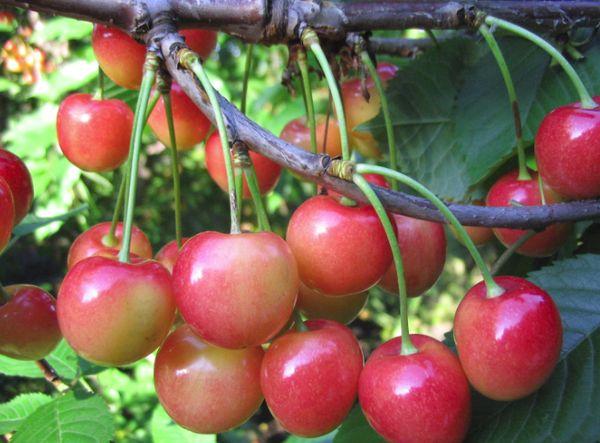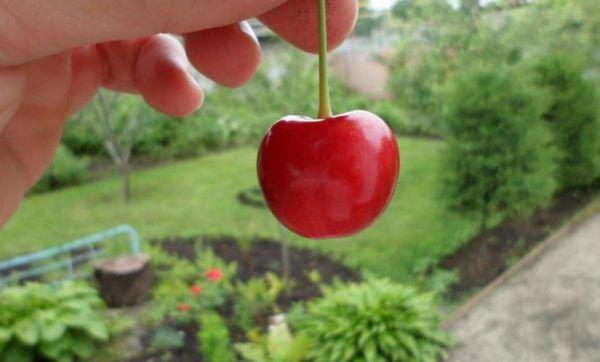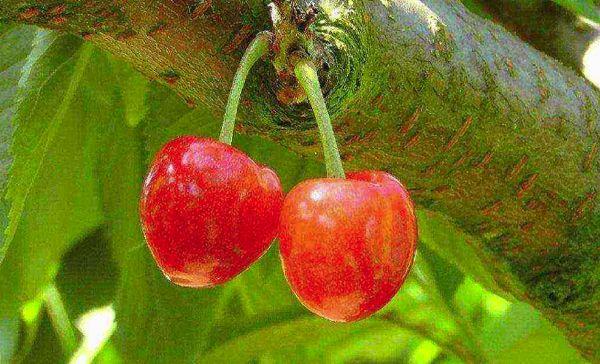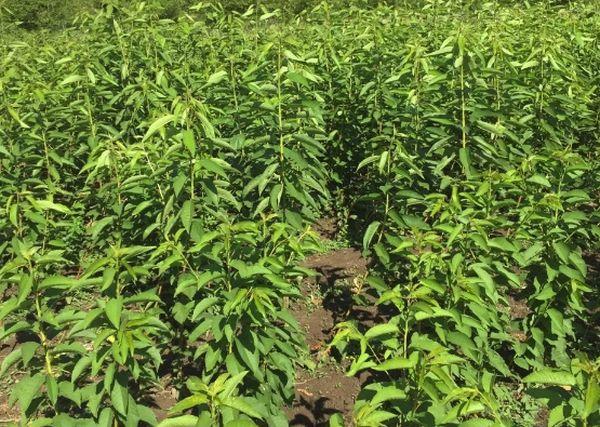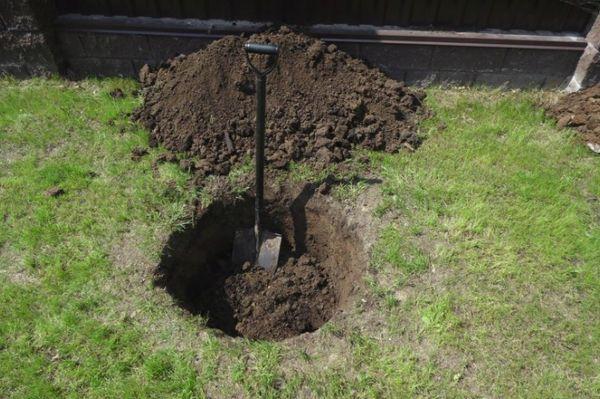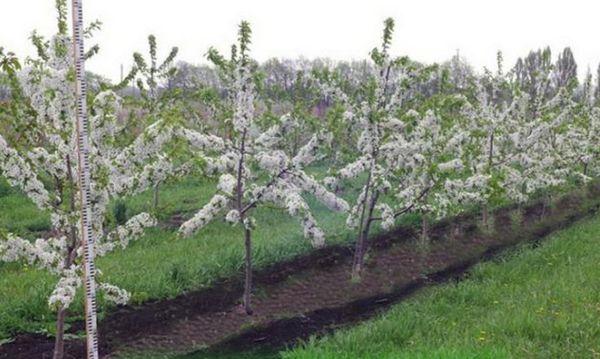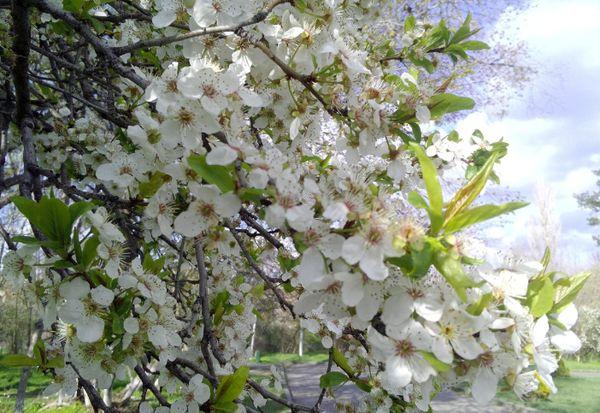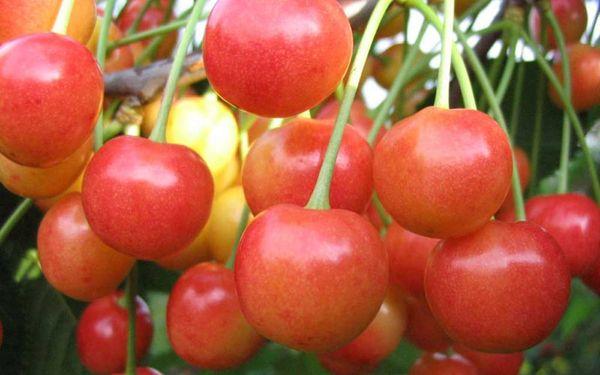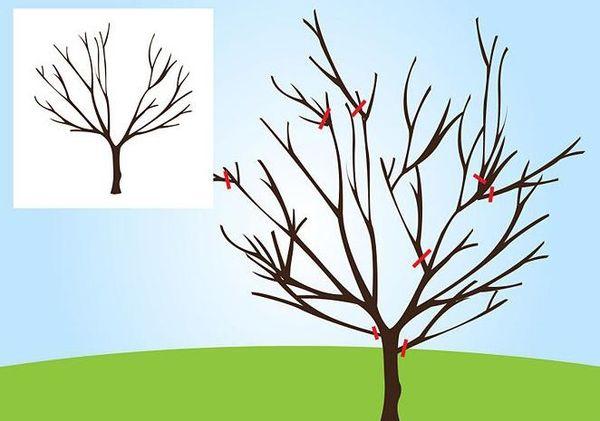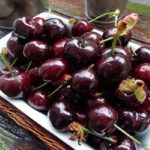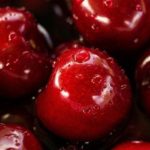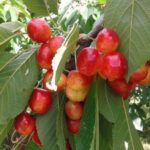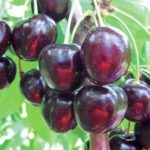The Orlovskaya Pink cherry variety is the result of domestic selection; the variety was bred by free pollination of the People's cherry. The hybrid type is listed in VNIISPK, the largest organization in the Russian Federation engaged in the study of berry and fruit crops and the development of gardening activities.
- How the cherry variety was developed
- general description
- Advantages and disadvantages
- Fruit
- Pollen and ripening
- Productivity
- Transportability
- Application of cherry fruits
- Basic soil requirements
- Landing Features
- Selection of seedlings
- Choosing boarding time and location
- Pit preparation
- Landing
- Pollinators
- Poetry
- Pink pearl
- In memory of Chernyshevsky
- Orlovskaya amber
- Secrets of care
- Watering
- Top dressing
- Trimming scheme
- Wintering
- Pest and disease control
- Tree trunk care
- Reviews about the variety
The variety was included in the state register in 2010. It is recommended to grow a fruit tree in the Central Black Earth region. To successfully grow cherries, you need to become familiar with all the features of planting, care, and prevention of diseases and harmful bugs.
How the cherry variety was developed
The cherry variety was discovered by A. Kolesnikova, E. Dzhigadlo, A. Gulyaeva and Z. Ozhereleva in 1999. Since then, the cherry variety has been under state testing. The originator was the All-Russian Research Institute for Breeding Fruit Crops.
general description
The cherry tree grows about 3.5 meters high, the bush looks like a pyramid, flat, raised. The crown density is medium. The trunk and main branches have gray bark. The shoots are medium-sized, straight, brown. The buds grow 3 mm in diameter, oval, tightly pressed to the branches. The leaves are oval-shaped, dark green in color. The top of the cherry is sharply pointed, the base is jagged.
There are a large number of glands; they are located on the leaves and cuttings. Petioles up to 35 mm long, 2.6 mm thick, pigmented. There are 4 flowers in the inflorescence, corollas with a diameter of 21.4 mm. The petals are white and freely located. The stigma of the pistil is located above the anthers. The sepals are not serrated, the shape of the calyx is narrowly goblet-shaped.
Advantages and disadvantages
The cherry variety suggests a number of positive and negative traits. You should familiarize yourself with them in advance, this will help you make your choice. If you take good care of the tree, the negative aspects can be leveled out.
| pros | Minuses |
| Increased resistance to frost | Average degree of resistance to fungal infections |
| Large amount of harvest | |
| Pest resistance | |
| Unpretentiousness in supervision |
Fruit
Cherry fruits grow weighing up to 3.5-4 grams, round, 17 mm high and 17 mm wide. The funnel is narrow and shallow. The pulp is pinkish, of medium density, the juice has no color. The fruit stalk is 41 mm long, its thickness is average. The stone is round, weighs 0.16 grams, yellow, easily separated.
The cherry received a rating from tasters - 4.4 points. A dessert variety, it contains 22.4% soluble dry ingredients, 15.49% sugars and 0.71% acids.
Pollen and ripening
Cherry pollen falls on May 10-15. The fruit ripening period is average, the harvest is harvested from mid-June. Fruiting is observed in the 3rd year of life. The variety does not pollinate itself; pollinating trees are planted nearby. The subspecies tolerates frost moderately, and the flower buds are highly resistant to low temperatures.
Productivity
From 1 hectare you can collect an average of 68.9 centners of cherries. Maximum – 107.2 c/ha. From one tree you can get up to 10 kilograms of cherries, subject to proper care.
Transportability
Cherries can handle transportation well if kept in a wooden or plastic container. Before transportation, sort out the cherries, because if the ripe specimens contain rotten fruits affected by diseases or pests, the first ones will suffer. The variety has good keeping quality; it can be stored in its original form in the refrigerator for up to 1.5 weeks.
Application of cherry fruits
Cherries are used for personal consumption or industrial activities. The fruits are eaten fresh or stored for the winter. They prepare preserves, jams, compotes from cherries or decorate desserts with them.
Basic soil requirements
Cherry trees prefer to grow on fertile soil; they do not tolerate clay, sandy soil well, and do not like drafts.The variety takes root well on sandy or loamy soils. The acidity level should be pH 6.5-7.0
Landing Features
Cherries should be planted next to at least 2-3 trees of different varieties, with the same ripening periods. Healthy neighborhood with cherry trees, since cherry pollen perfectly pollinates cherry inflorescences.
Selection of seedlings
It is better to buy seedlings in nurseries or from trusted sellers in the fall. At this time there is a greater selection of planting material. If you buy it from unscrupulous breeders, there is a risk of getting a wild seedling or the wrong variety. Planting material must be visually inspected for damage, rotten areas, mold and other deformations.
The required length of the seedling should be up to 1 meter. It must have a powerful conductor, several branches. If the root system is dry, it needs to be kept in clean water. The seedlings should be 1-2 years old. The trunk is dark beige in color, with a grayish undertone. There must be a vaccination site on it. This indicates the authenticity of the variety and the health of the seedlings.
Choosing boarding time and location
In the South, cherries are widely planted in the autumn, when leaf fall ends. 3-4 weeks before frost, the seedling has time to develop a rhizome. In mid-latitudes or in the North, planting work is postponed until the spring, when the snow melts and the buds begin to swell.
It is better to plant cherries in a place distant from apple, plum or other large trees. The area must be illuminated or there may be a reduction in sugar content or an overall reduction in yield.
This is by no means the most frost-resistant variety of cherries; it is advisable to plant the tree next to buildings, for example: next to a barn or bathhouse, a fence, a house.The place on the plot should be sunny, covered on the north side by a brick wall. When it heats up, the tree will not only be protected from the cold, but will also warm up.
The variety does not like water stagnation. If there is a risk of tree flooding on the site, it is better to build drainage or plant it on a hill. Otherwise, the seedling will develop poorly or die. The groundwater level should be from 1.5-2 meters.
Pit preparation
When preparing the land, it is important to take into account that horizontal roots lie at a level of 30-80 cm from the surface, and vertical roots are deepened by more than 2 meters. It is worth not just digging a hole, but plowing where the planting site is planned. The normal size of the pit is at least 80 cm deep, approximately 1 m wide. Plant seedlings at a distance of 3-5 meters from each other. The trees should be provided with space, or the spreading bush will shade and suppress other plants.
Landing
Before planting, you need to prepare the earth mixture. It consists of 2 buckets of soil, 1.5 kg of ammonium sulfate, 1 kg of superphosphate, 1 liter of potassium. Add 3 buckets of humus to the combination. Apply fertilizer to the planting hole. Plant the seedlings in holes 75*90 cm. Before placing the tree in the hole, straighten the rhizome, then tie the trunk to the support peg. Fill the hole with soil without covering the rhizome. Water the soil around and mulch.
Pollinators
The Orlovskaya Rozovaya cherry variety is self-sterile, so it is necessary to plant other varieties next to it at a distance of 3-4 meters. In order for ovaries to form, the trees need to bloom at the same time. It is advisable to select zoned varieties.
Poetry
The dessert variety of cherries ripens in the middle period and bears fruits of a dark scarlet color. The flesh is cartilaginous and easily separates from the bone. The variety exhibits high resistance to fungal infections and winter frosts.
Pink pearl
This is a large-fruited variety of cherries, the average fruit weight is 5 grams. The fruits are pinkish-orange, with a reddish blush. The taste is sweet, the tree produces fruit constantly. The variety is rarely affected by fungi, harmful beetles, and diseases.
In memory of Chernyshevsky
The cherry tree grows quickly and consistently produces red fruit. The pulp is tender, sweet and sour. The fruit received a score of 4.8 from tasters. The variety tolerates frost well.
Orlovskaya amber
The cherry subspecies is famous for its good harvest and is resistant to coccomycosis. The berries are large in size and yellow in color. The tree bears a lot of fruit, fruits of a sweet taste. The variety is unpretentious in care.
Secrets of care
In order for cherries to produce a lot of harvest, it is necessary to monitor them according to the rules. These include:
- timely watering and weeding;
- proper fertilizer;
- pruning and covering for the winter.
The variety rarely succumbs to diseases and beetle attacks, but if this is noticed, take sanitary measures.
Watering
Cherry is considered a moisture-loving crop; it should be watered 3-4 times during the growing season. Apply 5 buckets of water to young trees, 12 to adults. Trees need moisture when buds open, before harvest and in the fall, in preparation for winter. The water must be settled and warm, otherwise the crop may crumble.
Top dressing
Cherries should be fed 2 years after planting. If nutrients were added to the hole, their supply will be enough for the first time for the development of the seedling. Next, you need to fertilize the land annually. The culture responds well to nitrogen supplements. In March, the tree is watered with cow dung tincture or urea solution in a ratio of 30 g per 10 liters of water.
At the beginning of fruiting, prepare a mixture of superphosphate and potassium salt in the same proportion. In the fall, dig up the ground and add 10 kg of compost, 90 g of phosphorus, 40 g of potassium supplement.
Trimming scheme
Pruning helps speed up the growth of new branches and get a lot of harvest from the cherry. The procedure is carried out in October or March, when the process of sap flow is inhibited. The Orlovskaya Pink cherry variety forms a tiered-sparse bush in about 5-6 years. Each tier consists of 3-5 shoots located at a distance of 15 cm.
The remaining branches are removed. Leave approximately 50 cm between individual layers. Form 3-4 tiers in total. Perform preventive pruning annually, removing old, dry branches. Shorten the top by 3.5 meters. Carry out the work with disinfected pruning shears so that pathogenic agents do not enter the tree.
Wintering
A young Oryol cherry tree should be covered for the winter. This is done to protect the seedlings from snowless winters and severe frosts. It should be mulched with horse humus in the area around the tree trunk, wrapped in burlap or tights, the fabric should allow oxygen to pass through. The above method can subsequently be used as a replacement for whitewashing. It is advisable to wrap the tree completely.
Pest and disease control
The cherry tree is rarely attacked by diseases or bugs, but you need to know how to deal with it. Otherwise, the crop will die or the harvest will be small. Prevention consists of the following aspects:
- in March, before the sap flows, treat the tree with a urea solution;
- repeat the manipulation in the fall, when the leaves fall.
To prepare the solution, take 700 grams of urea and mix it in 10 liters of water. Purchased substances also help - Karbofos, Actellik, Confidor. Timely whitewashing of the trunk can also be considered a preventive measure.
Tree trunk care
It is important to keep the tree trunk in order, do not plant any plants on it, remove weeds, and loosen it regularly. If desired, separate the area from the lawn with a border net. To improve winter hardiness, in the fall, mulch the tree trunk area with horse humus 5 centimeters thick.
Reviews about the variety
Judging by the responses from summer residents and experienced gardeners about the Orlovskaya Pink cherry, we can assume that the plant is worthy of cultivation. The fruits ripen evenly, they are sweet, and there are many of them. No careful care required. Regular watering, weeding and fertilization are the key to the health of the tree for many years. If you look after it properly, its lifespan will be about 20 years. The variety is perfect for those who want to do business, as it brings a lot of harvest.
Ruslan Viktorovich 43 years old
I learned about the Orlovskaya Rozovaya cherry from my neighbors in the dacha cooperative. After listening to their laudatory stories, I immediately wanted to have such a beauty for myself. And now I have been the proud owner of this variety for the fifth year. There were no problems with growing or diseases, although I am not an experienced gardener, and when the first fruits began to appear, my happiness knew no bounds, I recommend it to everyone.
Gennady Afanasyevich 57 years old
I believe that every self-respecting gardener should have the Orlovskaya Pink cherry variety. The species does not require special care, is not afraid of frost, and the tree itself is neat.We have been using these cherries for many years, both in natural and canned form, and we also treat them to friends, the variety is wonderful.

